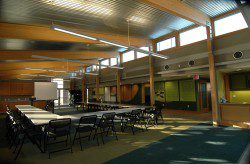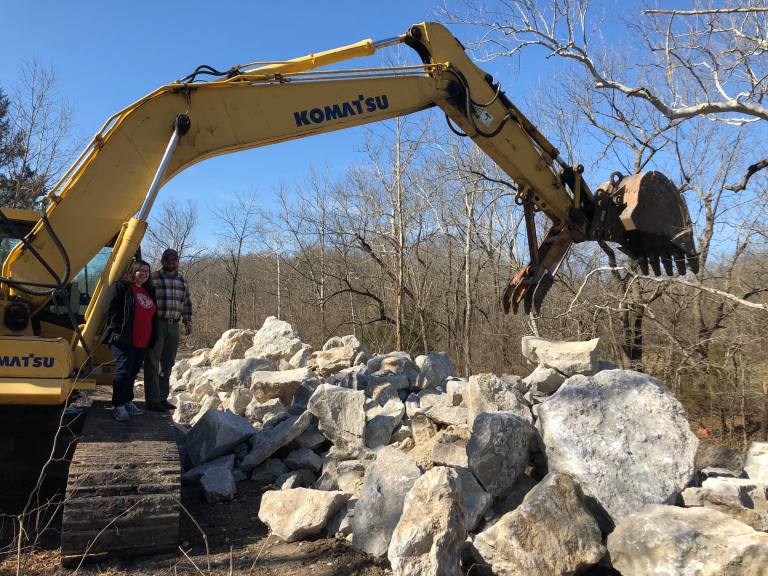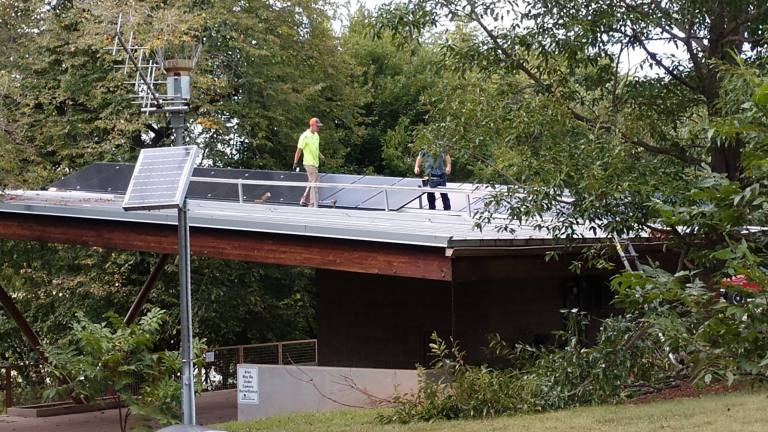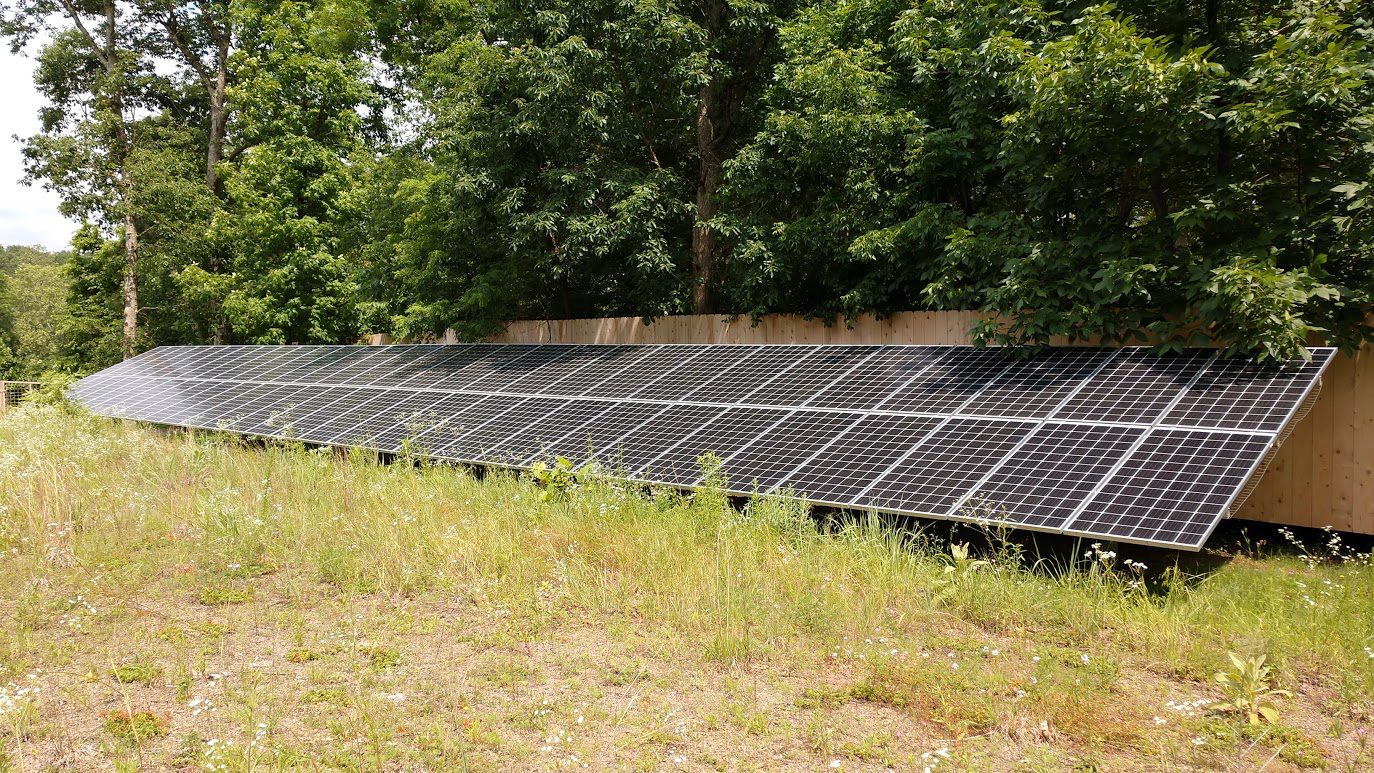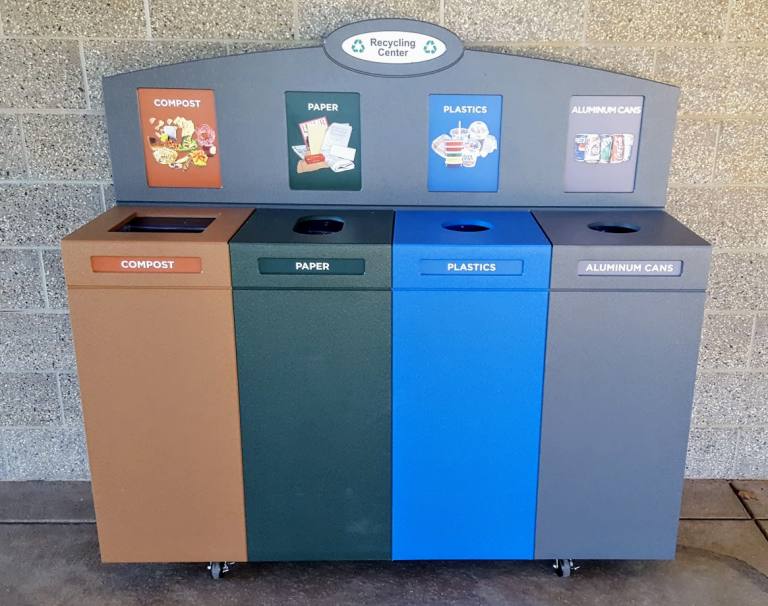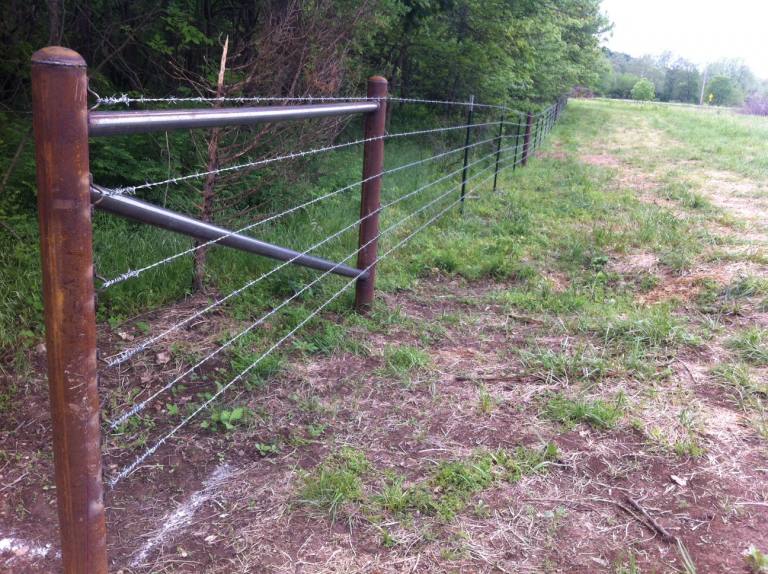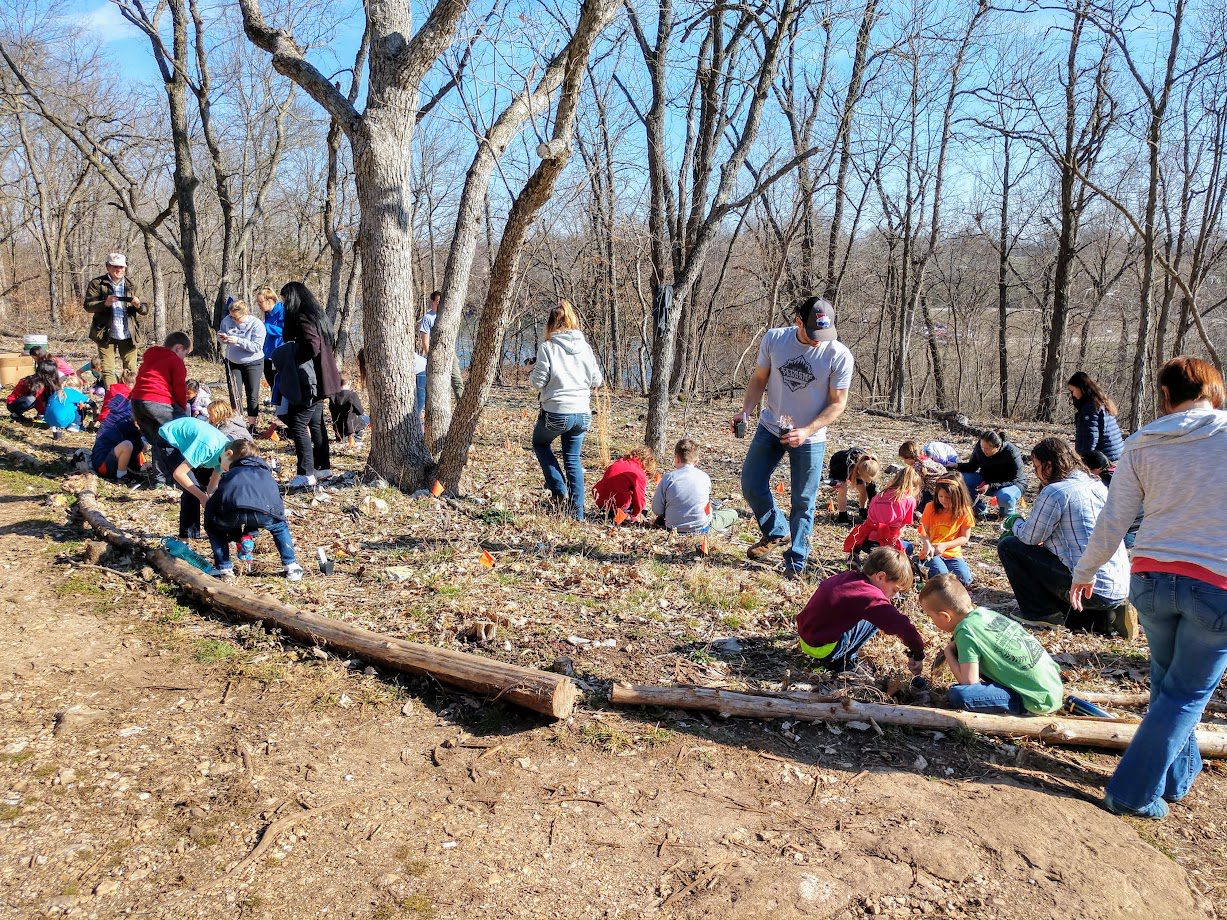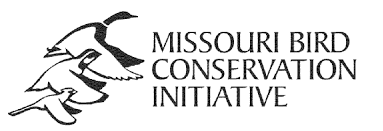Completed Projects
Rain Garden at Valley Water Mill Park
Project Completed Spring 2008
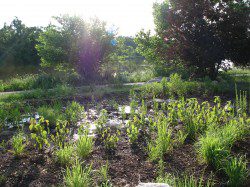 The Watershed Committee has partnered with a local Sierra Club to construct a Rain Garden at Valley Water Mill Park. This project will aid in preventing stormwater runoff from entering Valley Water Mill Lake. Rain Gardens are desinged to slow down, capture and absorb water using elements similar to those in nature: plants, rocks, shallow swales and depressions that hold water temporarily rather than let it quickly run away. Rain Gardens will reduce drainage and flooding problems, keep pollutants out of the nearby streams, rivers and lakes and bring beauty and wildlife to the landscape.
The Watershed Committee has partnered with a local Sierra Club to construct a Rain Garden at Valley Water Mill Park. This project will aid in preventing stormwater runoff from entering Valley Water Mill Lake. Rain Gardens are desinged to slow down, capture and absorb water using elements similar to those in nature: plants, rocks, shallow swales and depressions that hold water temporarily rather than let it quickly run away. Rain Gardens will reduce drainage and flooding problems, keep pollutants out of the nearby streams, rivers and lakes and bring beauty and wildlife to the landscape.
There are two kinds of rain gardens: wet and dry. The wet rain garden holds water almost all of the time. The rain garden at Valley Water Mill is a dry rain garden and most water is absorbed within 48 hours…too soon for mosquito larvae to hatch. Wildlife prefers locally grown native plants. If you plant a rain garden, be sure to buy plants native to Missouri.
Streamside Learning Station
Project Completed 2007
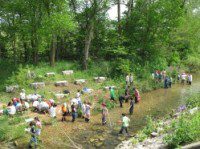 The Streamside Learning Station, on the banks of the South Dry Sac River, was completed using a grant from the Community Foundation and a donation from the Griesemer. This station consists of twelve large limestone blocks cut from the historic Phenix Quarry in Greene County. These stones, in an amphitheater arrangement along the stream bank, allow students to sit or work as they study and sample the stream. The Streamside Learning Station was dedicated to the Griesemer Family.
The Streamside Learning Station, on the banks of the South Dry Sac River, was completed using a grant from the Community Foundation and a donation from the Griesemer. This station consists of twelve large limestone blocks cut from the historic Phenix Quarry in Greene County. These stones, in an amphitheater arrangement along the stream bank, allow students to sit or work as they study and sample the stream. The Streamside Learning Station was dedicated to the Griesemer Family.
Wetland/Curriculum Grant
Project Completed 2007
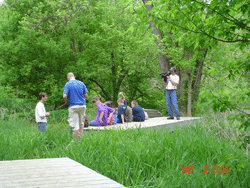 The Community Foundation of the Ozarks awarded the Watershed Committee $22,288 for the development of hands-on-education curriculum for the four outdoor classrooms at the Watershed Center. Two specific goals were to build a wetland learning station, allowing access through the wetland and designing a teacher friendly curriculum that corresponded with Missouri’s “Grade Level Expectations” or GLE’s.
The Community Foundation of the Ozarks awarded the Watershed Committee $22,288 for the development of hands-on-education curriculum for the four outdoor classrooms at the Watershed Center. Two specific goals were to build a wetland learning station, allowing access through the wetland and designing a teacher friendly curriculum that corresponded with Missouri’s “Grade Level Expectations” or GLE’s.
MO Recreational Trails Grant
MO Recreational Trails Grant
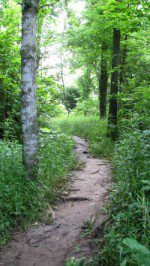 The Department of Natural Resources Trails Grant provided funds to design and complete a trail loop around the Watershed Center site. Trails maps were designed and a small section of glassphalt trail was constructed to connect the Lakeside Learning Station to the fishing piers.
The Department of Natural Resources Trails Grant provided funds to design and complete a trail loop around the Watershed Center site. Trails maps were designed and a small section of glassphalt trail was constructed to connect the Lakeside Learning Station to the fishing piers.
Valley Water Mill 319 Project
Projects Completed 2002-2007
The rapid pace of urban growth in the geologically sensitive Valley Water Mill sub-watershed led the Watershed Committee to apply for Clean Water Act Section 319 funds to address urban and suburban sources of nonpoint pollution, implement water-friendly practices as demonstrations and to build and design educational facilities where citizens learn about nonpoint source pollution and develop skills to address the problems.
Projects Include
The Springside Learning Station deck surface and foundation were constructed out of 100% recycled plastic material and built with volunteer labor. The platform accommodates about thirty students and is located adjacent to Sander Spring. The WCO and partners dedicated this learning station to former DNR employee Becky Shannon.
The Watershed Center’s largest outdoor class room is an open-sided “green” pavilion with a beautiful view of the lake. The structure features high fly ash concrete construction, runoff absorption areas and low-maintenance steel roof supported by sustainably grown and harvested wood “glulam” beams. Landscaping around the station includes native Buffalo Grass and wildflower plantings. Dedicated to former City Utilities employee Duane Galloway.
Missouri State University, under the direction of Dr. Robert Pavlowsky, completed an assessment of the reservoir and stream channels in the Valley Water Mill sub-watershed. This assessment work indicated that nutrient loading to the reservoir was lower than expected and sediment quality was good.
The wetland enhancement plan developed by Intuition and Logic Engineers included the development of several specific wetland zones with different water depths and slopes, and the planting of over 30 types of native wetland plant species. Prior the wetland was overgrown with non-native Reeds Canary Grass.
Sediment excavation of the Valley Water Mill reservoir accomplished three goals: 1) provided downstream water quality benefits by increasing storage time and settling capacity in the reservoir, 2) maximized the 9-foot depth of the reservoir, which will discourage bottom-rooted aquatic vegetation and improve fishing, and 3) increased the storage capacity fo the water supply.
Our Missouri Waters
The goal of Our Missouri Waters is to create a Healthy Watershed Plan
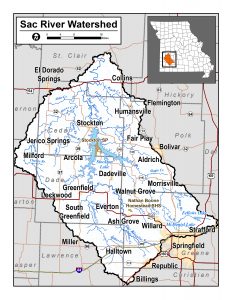 On May 1st, 2015 the Watershed Committee of the Ozarks was awarded the Our Missouri Waters Collaborative effort for the Sac River Watershed through the Missouri Department of Natural Resources. The goal of this project was to gather local input and identify water resource priorities through community meetings. A local watershed advisory committee was assembled to identify and develop resources to achieve those priorities. Citizens, community leaders, elected officials and anyone living in the watershed were invited in this process to share how they use their water and what’s needed to continue protecting and enhancing the Sac River watershed.
On May 1st, 2015 the Watershed Committee of the Ozarks was awarded the Our Missouri Waters Collaborative effort for the Sac River Watershed through the Missouri Department of Natural Resources. The goal of this project was to gather local input and identify water resource priorities through community meetings. A local watershed advisory committee was assembled to identify and develop resources to achieve those priorities. Citizens, community leaders, elected officials and anyone living in the watershed were invited in this process to share how they use their water and what’s needed to continue protecting and enhancing the Sac River watershed.
The grant was completed on October 31st 2016. The survey results, summary of the process and committee recommendations are outlined in the Sac River Healthy Watershed Plan found here. The plan will be a living, working document to help maximize resources and focus watershed priorities over the next five years. Thank you to everyone that served on the committee and helped with this project! To learn more about the Our Missouri Waters statewide initiative visit: http://dnr.mo.gov/omw/
Stacey Armstrong Smith, Projects Manager
Partners



